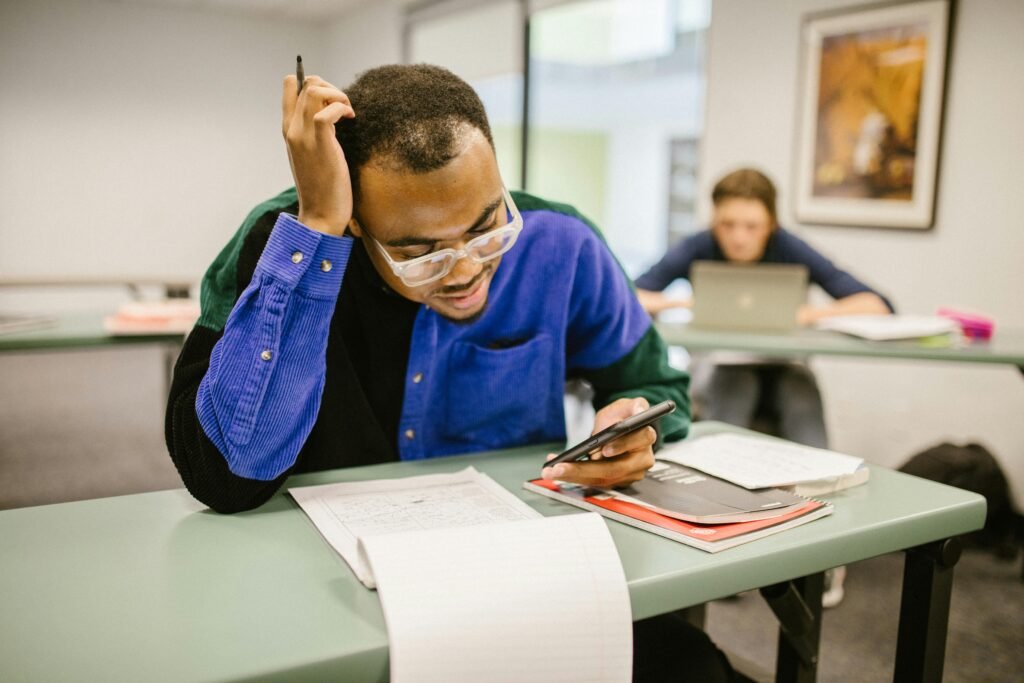Introduction
We are witnessing an evolution — and the high-speed pace of change is not only happening in the world around us — it’s also occurring in education. We’re no longer limited to the printed textbooks, chalkboards, and traditional classrooms. Technology has transformed how people learn, how teachers teach, and how educational institutions function.
With the advent of online learning platforms, smart classrooms, and artificial intelligence-infused learning tools, advancements in technology in education are perhaps more evident than ever before. Technology is what links traditional ways of teaching and learning to contemporary teaching and learning experiences.
But what about technology makes it so important in education?
Let’s take a closer look.
Why Is There Importance of Technology in Education?

The importance of technology in education is its ability to improve learner outcomes, retain learner engagement, lower the barriers to learning, and prepare learners to be digitally-savvy students in the future. Technology creates a more interactive, flexible, and amplified learning environment that benefits students and educators alike.
Technology is more than the devices we utilize; it is enhanced learning based on how we utilize those devices.
The Advantages of Using Technology in Education
1. Increases Students’ Engagement and Interest
Learning can be neither boring nor passive. Digital resources, such as interactive videos, educational games, virtual labs, and simulations, allow users to explore subjects in a fun, interactive way that captivates interest, inspires curiosity, and encourages participation.
For example: Platforms like Kahoot! and Quizlet make quizzes into light competitions that enhance learning and memory retention.
2. Encourages Personalized Learning
Every student learns at their own speed. Technology provides educators the ability to work with adaptive learning platforms to tailor lessons based on a student’s strengths, weaknesses, and speed.For example: Learning resources such as Khan Academy or IXL provide adaptive content for students in real time and that ensure student time is not wasted waiting for a teacher to provide support.
3. Increases Access to Quality Education
One of the most powerful implications of technology is its ability to remove barriers. E-learning platforms, mobile apps, and digital libraries have all have the ability to make world-class education accessible to students living in remote communities, students with disabilities, and students who need flexible education options due to work or family commitments. For example: During the COVID-19 pandemic platforms like Google Classroom and Zoom made education possible – there is a lot we learned, especially in a post COVID world, that indicates learning can happen anywhere.
4. Prepares Students for a New Future.
The jobs of the future need digital skills, problem solving, collaboration, and innovation.
Through the use of technology, classrooms prepare students to develop these 21st-century skills from an early age.
Example: Learning to program with Scratch or use tools like Google Docs exposes students to digital fluency that mirrors real-life uses of technology.
5. Maximizing Productivity and Creativity for Teachers
The incorporation of technology gives educators the tools to streamline grading, curate content, and manage student progress, and that’s just the beginning. Technology also encourages hybrid models of instruction, flipped classrooms, and more innovative approaches to teaching.
Example: A teacher might prepare lessons ahead of time for “flipped” learning to maximize time for class conversations and problem solving.
How Technology Incorporates in the Classroom

Technology expands the classroom experience from a static learning space to an active and engaged learning environment. Here is how:
Smart Boards & Interactive Displays – Instead of relying on a traditional whiteboard, educators supply touch-smart screens or projectors to support multimodal teaching in the classroom.
Online Assessments and Feedback – Technology creates offline and online possibilities to assess candidate performance and provide real-time feedback related to student and teacher learning.
Learning Management Systems (LMS) – Technology, like Moodle, Canvas, and Schoology, provides teachers an organized space to maintain curriculum materials, student assignments, etc., and monitor student engagement.
Collaboration Tools – Learning is a social experience, and technology lends itself to providing opportunities for collaboration between students such as shared collaboration documents, cloud-based resources, and real-time online chat.
Examples of Education Technology in Action

Below are a few practical examples of how technology impacts education:
VR in Education – For instance, students can take virtual field trips to places of historic interest or look at human anatomy with apps such as Google Expeditions.
AI Learning Assistance – Google Socratic and Duolingo, for instance, use artificial intelligence to support students through step-by-step learning.
Gamified Learning – Minecraft: Education Edition merges video games and academics to teach coding, history, and more.
Challenges and Considerations

Technology presents education with both great opportunity and great challenges to educational institutions and educators:
- Digital Divide – Not all students have equal access to devices or reliable internet.
- Screen Time – Balance is important to avoid the negative effects of excess screen time.
- Teacher Training – Teachers need training to fully utilize tech tools in their lessons.
FAQs (Regarding the Importance of Education Technology)
Q1: How does technology enhance the quality of education?
Technology increases engagement, provides student-centered or personalized learning, and provides students access to a variety of high-quality resources.
Q2: Is technology taking the place of teachers?
No, technology does not replace teachers. Technology supplements education, and just as education cannot consist of only computers, teachers will always be important to the education process.
Q3: What will be the future of technology in education?
Look for more, artificial intelligence, virtual reality, and personalized learning. Education will become more flexible, accessible, and skill-based.
Q4: Is technology beneficial for students with disabilities?
The answer is yes. Text-to-speech technologies, speech recognition, and various learning applications help support all learners through inclusive education.
Conclusion
The role of technology in education is unquestionable. It’s not only about modernizing the physical environment of classrooms, but also about empowering students, helping teachers, and evolving the future of education. Once key tools and strategies are adopted, education becomes exciting, personalized, and inclusive! Whether you are a student, parent, teacher, or policymaker, understanding the true value of technology in education is paramount to offering improved experiences



